
FAQ
-
Yard Ants
-
What do yard ants look like?Yard ants are the most common ant that people think about when they think about ants. They aren’t a specific species of ant, but more of a term used for ants that live in your yard. Sometimes called Field Ants, these insects are roughly a quarter-inch (¼”) (6mm) long. They vary in color from yellow or brown, to red, black, and even a combination of red and black. You’ll likely spot the anthills before you see any actual ants.
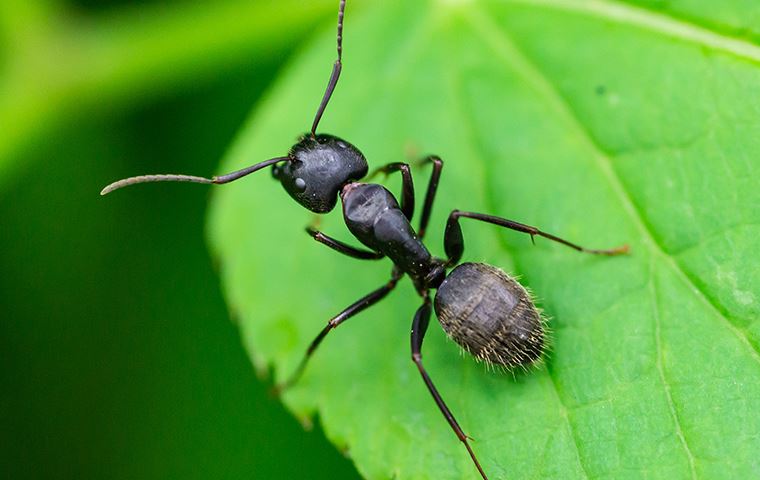
-
Why are there so many ants in my yard?Field ants are always looking for new places to colonize. Ants can suddenly appear in your lawn if you haven’t taken any preventative measures, and you have well-drained, dry, warm soil. They don’t care if your lawn is a desert or a green oasis. A lush and well-drained lawn is a prime real estate for yard ants. Ants can’t live in wet ground. If you have wet or mucky soil you won’t have ants. So even the best maintained and manicured lawn can get ants. In fact, the better the lawn, the more likely you have ants trying to move in.
-
Will ants go away on their own?Yard Ants can live for years. Unless the conditions in your yard change, ants will not go away on their own. Left unchecked ants will likely cause any number of cosmetic damages to your lawn. Ants reproduce very quickly! The average yard ant colony is around 4,000 – 7,000 ants, but in rare cases can reach upwards of 40,000 ants! It’s easiest to take care of smaller ant colonies than it is to treat larger ones. If you wait for the ants to go away on their own you’ll only make your ant problem worse and harder to deal with.
-
Can yard ants damage my lawn?First off, ants can provide some benefit to your lawn. They eat other insects in your yard and can help with aeration just as much, if not more than earthworms. But left alone, yard ants can cause significant cosmetic damage to your lawn and will kill your grass. Yard ants create mounds of excavated dirt called ant hills in your lawn. These ant hills can kill the grass around them, particularly if the grass is short. These tiny excavators can eventually make your lawn uneven. In addition, ants eat at the grassroots while they are digging tunnels leading to bare spots in your lawn.
-
Can lawn ants hurt your garden?Yard ants eat honeydew. Honeydew is a sweet substance secreted by aphids. Ants are known to protect aphids from predators and tend to their needs. This nurturing of aphids can lead to an increased number of them in your garden. Most gardeners know that too many aphids will destroy your plants. While lawn ants don’t directly damage your garden, their symbiotic relationship with aphids does put your garden at risk.
-
How do I get rid of ants in my lawn?The quickest way to get rid of ants in your yard is to call your local pest control service. Safeguard Pest Solutions is a family-owned company that provides safe, high-quality home pest control and commercial pest control. We provide a safe and effective liquid ant treatment that will get rid of ants in your lawn without killing your grass. You’ll see results in 24-48 hours. This once a year treatment will keep your yard ant-free all season long.
-
-
Ticks
-
What are ticks?Ticks are related to spiders. They have eight legs, a flat, oval-shaped body, and are usually dark in color. Adult ticks are about the size of an apple seed. Ticks present a serious home pest control and commercial pest control issue because their numbers are on the rise, and if they attach to you or your pet they are hard to find. Ticks can’t fly, they don’t jump, and they won’t drop down on people or pets from trees. Ticks will latch on to your shoe or your pet’s paw and crawl up to find a place to attach themselves.
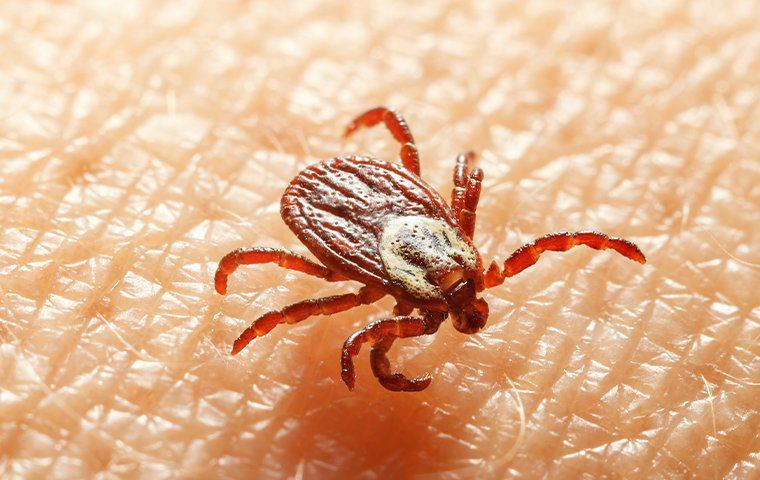
-
Where will I find ticks?Ticks are usually found in elevated wooded and grassy areas. Tall grass is a favorite spot for ticks to find their prey. Ticks eat blood to survive, so they live where the animals they feed off of roam. You can find ticks anywhere you find deer, birds, rabbits, squirrels, mice, and other rodents. Ticks detect a host using body odors, carbon dioxide, body heat, moisture, vibrations, and even by shadows. They like to make their home in places with lots of shrubs, weeds, tall grasses, and leaf litter. A single female, depending on the species, will lay a batch of eggs ranging from 1,000 to 18,000 eggs and then will die. The most serious problem with ticks is the diseases they can spread to humans, pets, and livestock.
-
Where do ticks hide on humans?Ticks are surprisingly fast and can move across your body quickly. You could find a tick nearly anywhere on your body. They prefer warm and moist areas. You will often find a tick in your armpits, groin, or scalp. While clothes do offer protection from ticks, they can still get under your clothes.
-
How can I protect myself from ticks?
- Use Insect Repellent
- Wear Light Colored Clothes
- Avoid Areas with High Grass
- Wear Long Pants
- Wear Long Sleeved Shirts
- Wear Socks
-
Are ticks dangerous?Ticks are common carriers of certain diseases such as Lyme Disease & Rocky Mountain spotted fever. Not all ticks carry disease. It used to be getting bit by a tick was more of a nuisance than anything else. Nowadays you have a much higher risk of getting sick from a tick bite. In the United States, both ticks and tick-borne diseases have been on the rise over the last 20 years. If a tick attaches itself, you have 26-48 hours before bacteria transmission.
-
Can ticks kill you?Tick bites are generally harmless without any symptoms whatsoever. But ticks do carry disease, such as Lyme disease, and cause other allergic reactions. Other diseases can be dangerous, and sometimes deadly, to both humans and pets.
-
What happens if I get bitten by a tick?When a tick finds a place it likes it will bite you. You don’t feel this bite because ticks secrete novel painkillers into their hosts through their saliva. This numbs the immediate area and allows the tick to burrow it’s head firmly in the host unnoticed. Once there it will continue to feed until it is removed or fully engorged. The amount of time a tick will stay attached to a host depends on what stage in the life cycle it is. The older a tick, the longer it can feed. Typically you’re looking at 3 to 10 days.
-
What happens if I don't remove a tick?If you don’t remove a tick it will continue to feed until it’s fully engorged and fall off on its own. The area where it falls off will often turn red and itchy like a mosquito bite. Oftentimes people won’t notice they’ve been bitten by a tick until they start feeling itchy. Ticks are common carriers of bacterial diseases that can make you sick. If a tick attaches itself, you have 26-48 hours before bacteria transmission.
-
What will make a tick back out?There are a number of myths on how to get a tick to back out on its own. A match or lighter is a common one where the heat is supposed to compel the tick to back out of your skin. Coating the tick with vaseline or some kind of liquid dish soap is another common belief in removing ticks from your skin. The idea is to suffocate the tick forcing the tick to back out. Vaseline will not kill a tick. Unfortunately, these methods are more likely to cause the tick to burrow deeper into your skin, instead of coming out.
-
How can I remove a tick?The CDC recommends the best way to remove a tick is with pointed tweezers. Tweezers should be used for tick removal using slow, steady pressure, pulling straight up and as close to the skin as possible, so that the entire tick and mouthparts are likely to be removed.
-
How do I know if a tick is fully removed?When you successfully remove a tick check and see if it’s still alive. If the tick is moving around and alive you can rest easy knowing you got the entire tick out. If the tick is dead it’s likely the head or some mouthparts are still inside your body.
-
What do I do if I pull a tick out and the head stays in?If you fail to get the entire tick out of your body don’t fret. The head and mouth will not continue to burrow into your body. It’s very likely you will be completely fine. If there is a large portion of the head you should continue to remove it with sharp-pointed tweezers. If it’s just a small portion that you can’t get it’s likely your body will shed it in a few days. There is a strong chance you have some minor irritation in the area for a few days. You are also more likely to get infected if the tick is a carrier of a disease.
-
-
Common West Michigan Spiders
-
Brown Recluse In Michigan (Venomous)The Brown Recluse in Michigan is known for the violin-shaped mark on its back. They are not actually native to Michigan being unable to survive temperatures below 40 degrees. They are known to hitch rides on vehicles from more southern states and often find their way here during the warmer months. Sometimes referred to as the ‘violin spider’, the Brown Recluse is roughly the size of a quarter when fully grown and loves to reside in dark, secluded areas like garages, trash cans, old tires, and attics. The Brown Recluse not only captures prey in their webs, but will also go out and hunt! They eat cockroaches, crickets, flies, and other spiders. For the most effective spider control, get rid of what the brown recluse is hunting and you will succeed in getting rid of these spiders. Bites are very rare due to the extreme shyness of this spider.
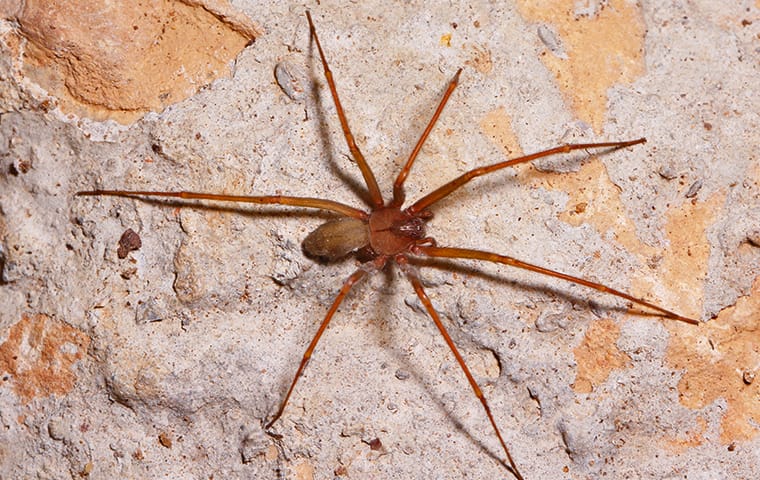
-
Wolf Spider in Michigan (Mildly Venomous)Another spider control species in Michigan is the Wolf Spider. It has a sizeable family, and most of them are large, dark, and active. Unlike most spiders, Wolf spiders don’t spin webs to catch their prey. They prefer to hunt for prey with strong fangs and exceptional eyesight. Some species will chase them down, while others prefer to ambush their prey when it walks by. Their color varies depending on the environment and they are readily identifiable by the presence of hair on their legs and body. Wolf Spiders are known for being agile and speedy hunters. A bite from a Wolf Spider has caused some adverse health in humans, but is not lethal, even if left untreated.
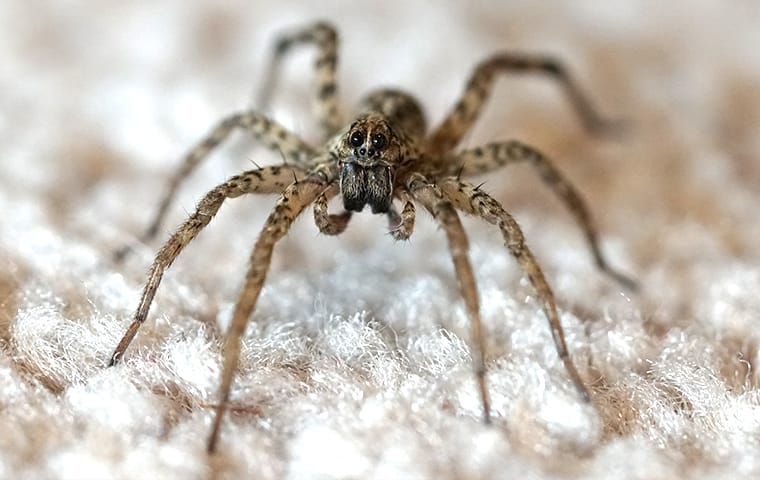
-
The Northern Black Widow (Venomous)The Northern Black Widow in Michigan is most commonly found in the lower western peninsula of Michigan. Their entire bodies are completely black, with the females having a classic red hourglass shape on their abdomen. Males will not have the hourglass shape, but will still have a red or yellow-black band on their abdomen. Only a female bite is harmful to humans. They live outdoors in old stumps, wood piles and hollowed logs. You may find them inside of crawl spaces, garage corners, and other dark areas. Black Widows are very shy and do their best to avoid humans. Bite victims only have a 1% mortality rate despite their venom being 15 times stronger than a rattlesnake.
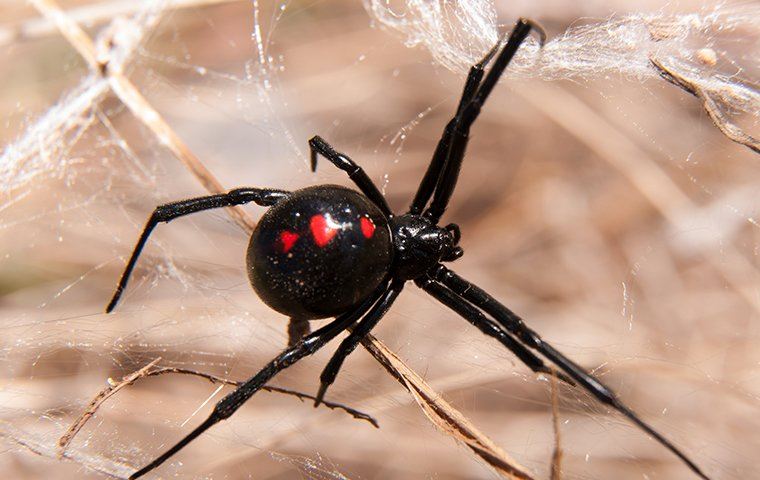
-
The Jumping SpiderThe Jumping Spider in Michigan is one of the largest spiders found in North America. They have incredible eyesight compared to other species, especially because they can see in true color – just like humans – and that helps make them superior hunters. The Jumping Spider can leap up to 25 times its own body length and can be identified by its unique eye pattern and hairy body. They are commonly found in grasslands, woodlands, and gardens, but can find their way into homes, barns, and other residential structures. They eat bollworms, webworms, stink bugs, mosquitoes, and a wide range of arthropods. For effective spider control of the Jumping Spider, try to cut out their favorite food sources and you won’t have a problem with them.
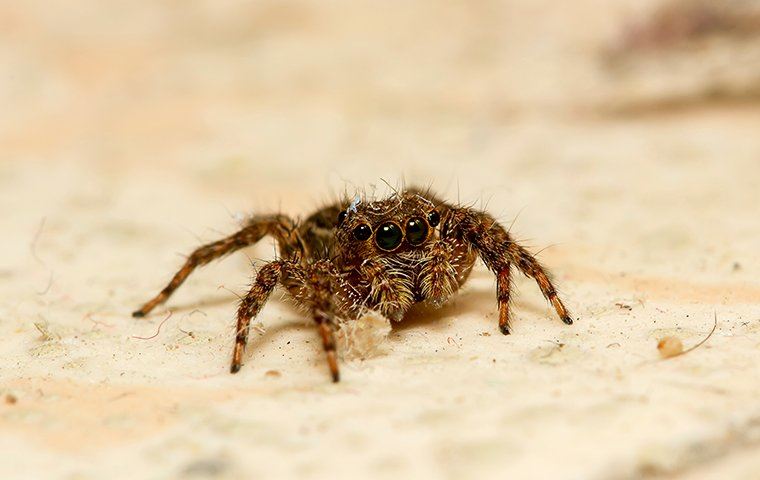
-
-
Spider FAQs
-
Are spiders beneficial?
Despite their bad reputation, spiders are extremely useful in our gardens and ecosystem. They are nature’s top pest control agents. Spiders aid in controlling other common pests like mosquitoes, cockroaches, grasshoppers, and flies. All of these insects have been known to devastate crops, gardens, and homes. In fact, it’s estimated that worldwide, spiders eat 400-800 million metric tons of insects every year
Chemical control can only do so much. Spiders can aid in limiting the population of the pests and can do more! Spiders significantly decrease the onset of several diseases such as malaria from mosquitoes and typhoid from house flies. In addition to being crop protectors and disease defenders, spiders’ venom is currently being studied by scientists as a way to help to treat arthritis. Medical applications that also involve the use(s) of spider silk and spider venom are increasing in number.
-
Are spiders dangerous?Most common house spiders pose very little to no threat to humans. A house spider may bite if it feels threatened. A house spider bite is essentially harmless to humans. At most you may experience a minor irritation like a small itchy red bump. We are much more dangerous to spiders than they are to us. Bites are extremely rare among the few dangerous species like Black Widows or recluses. If you are unsure about a spider you find roaming around your property; you can reach out to our professional home pest control and commercial pest control experts for help!
-
Will a spider attack me?Humans are far more dangerous to spiders than spiders are to humans. Spiders are not out to get you and actively try to avoid humans. Most spiders don’t bite, and many couldn’t bite you if they wanted to. Even if you are bitten by a spider it’s very unlikely you get anything more than a small itchy red bump. 98% of spiders are harmless to humans. Even the dangerous few like black widows and brown recluses rarely bite. And of those bites very few cause serious injury. In the United States each year, about 2,200 people report being bitten by a black widow, but most do not need medical treatment. A number of spider bites are “dry” bites that have no venom injected. In the United States, no deaths due to black widows have been reported to the American Association of Poison Control Centers since 1983.
-
How do I get rid of spiders?
A common household item that will help keep spiders away from your home is vinegar.
- Half vinegar & water spray
- Spray directly on spiders, webs, and in places you find them
Another way to get rid of spiders is by keeping you home clean.
- Spiders like to hide in nooks and crannies
- Use plastic containers instead of cardboard (harder to climb in)
- Regular dusting and vacuuming
-
What smells do spiders hate?
- Peppermint Oil
- Tea Tree
- Lavender
- Rose
- Cinnamon
-
-
Overwintering Pests
-
Boxelder Bugs
Boxelder bugs are black with red or orange markings on their back. They have 6 legs and two antennae, and get their name from the trees they live on and lay their eggs in during the warmer months. They can often be found congregating together in warm spots while they attempt to find safe, warm places to stay alive during the winter months.
Your home is a favorite place where boxelder bugs like to overwinter. They enter your home through small cracks and crevices and present a real pest control issue when large groups of them infest your home. Boxelder bugs rarely bite, but their mouths can penetrate the skin if mishandled and leave you with a small red bump similar to a mosquito bite. Their feces can leave reddish stains on fabric. If crushed, the boxelder bug can release a strong unpleasant odor.
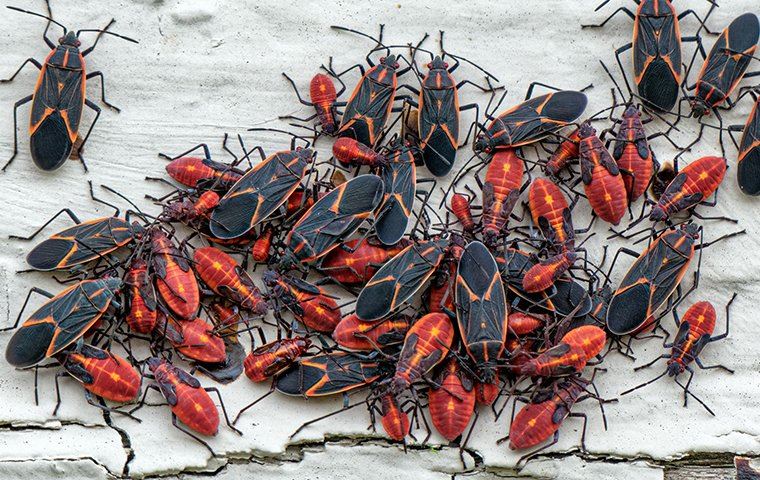
-
Asian Ladybugs
The Asian Ladybug, also known as the Asian Lady Beetle, is a common insect that will often use your home to overwinter, congregating in warm spots in large numbers when temperatures begin to cool. These beetles have the ability to squeeze into small cracks and crevices, and have even been known to squeeze themselves through closed windows! They tend remain dormant for the winter, but are known to resurface throughout a home when temperatures warm up to 50 degrees or more.
The Asian Ladybeetle looks very similar to the native Ladybug. When congregated in large groups, they emit a foul odor. This beetle can and will bite. Asain Ladybugs don’t appear to breed indoors, so any that you find over the winter in your home likely found their way inside from the outdoors.
.2403141353550.jpg)
-
Cluster Flies
Cluster Flies are slightly larger than the common housefly. They are dull gray in color with black markings and numerous tiny golden-yellow hairs. This pest tends to show up during the colder fall months in large numbers, and they are often seen on the sides of houses warming up in the sun while searching for a safe spot to protect them during the cold winter months. They do not reproduce indoors.
Cluster flies are a nuisance pest. They are unsightly and may leave small dark spots from their excrement. Fortunately, there are no known diseases that are carried by the cluster fly.
The easiest pest control strategy is to prevent these flies from entering your home in the first place. If indoors, you may use insecticides to eliminate them from your home. However, it’s best to hire a professional exterminator since using insecticides in your home can be a potentially serious health risk to you and your family.
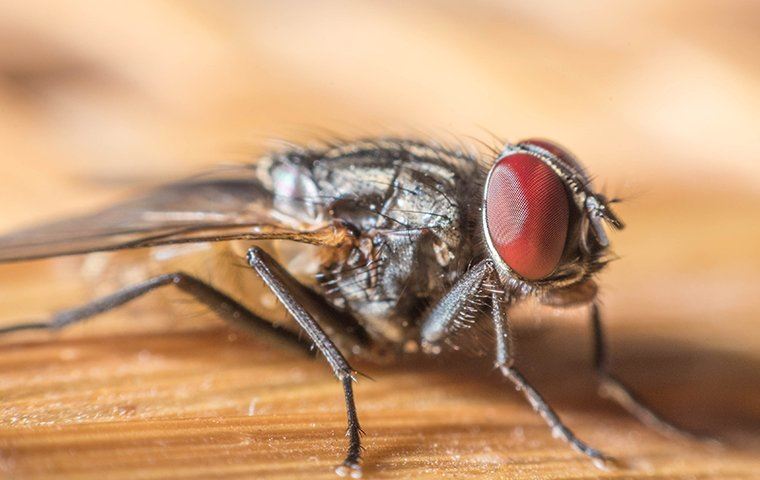
-
Brown Marmorated Stink Bug
The Brown Marmorated Stink Bug is a common pest that can wreak havoc on fruits and vegetables during the summer months. They are brown colored with a flat body that is shaped like a shield. During the winter months, this overwintering pest can invade your home in large numbers, creating a serious pest control problem.
Like all pests seeking shelter in your home, the best strategy is to prevent them from entering in the first place. Stink bugs enter your home through windows, cracks, and crevices around your home. Locate these openings and seal them before temperatures begin to fall. One inside, you can find these pests hiding behind baseboards, window and door trim, and around exhaust fans or lights in the ceiling.
If crushed, the Stink Bug emits a pungent odor that can linger for a long time. Home Stink Bug removal can be tricky. It’s advised that you seek a professional exterminator to help get rid of Stink Bugs in your home.
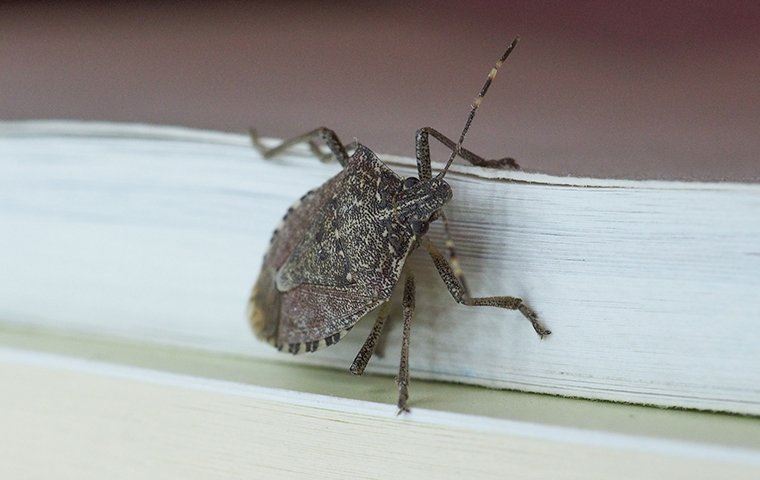
-
-
Fleas
-
What are fleas?One of the most common pest control problems are fleas. Fleas are tiny, parasitic, flightless insects that live off the blood of your pets, and other warm-blooded mammals and birds. They’re brown to black in color, and have flattened bodies that help them maneuver around their host’s fur. Even though they’re very small, you can see them with the naked eye. A fully grown flea is 1.5 – 3.2 millimeters in length. That’s roughly the size of a poppy seed or a large sesame seed. They are surrounded by a hard exoskeleton shell making them very resilient and tough to kill.
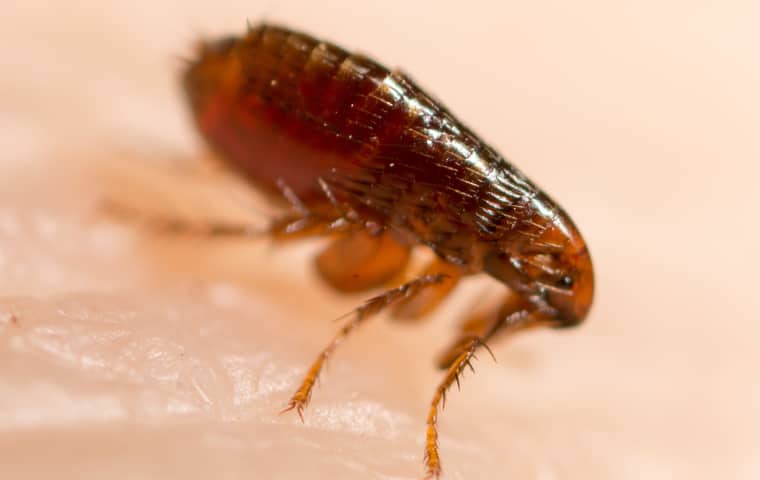
-
Where do fleas come from?
Fleas rarely jump from host to host. Instead, flea transmission is done through eggs. After their first blood meal, female fleas can lay up to 100 eggs in a day. These eggs are not attached and will often fall off the host. A flea egg can lay dormant for up to 100 days until the right conditions for hatching occur.
A majority of infestations originate from outside. Common carriers are dogs, cats, raccoons, opossums, and coyotes. While these carrier animals walk around they continuously drop eggs off their bodies. Fleas thrive in the same shady protected areas your pets like to cool off in. During the day these animals seek shelter from the elements and create what is known as flea hotspots. A cool place like under a deck or beneath bushes are great places to relax for wild animals and pets alike.
Another common source of fleas is from dormant eggs. Moving into a new home can cause a previously dormant flea population to re-emerge. You don’t even need to have pets. If the previous owner had fleas simply living inside will trigger the flea eggs to hatch causing a new infestation.
-
How long can fleas live in my house?
After her first blood meal, a female can lay up to 100 eggs a day! These eggs are not attached so they fall off the host and lay dormant until conditions are right for hatching. Larvae hatch from the eggs and feed off any available natural material like dead insects, pet hair, vegetable matter, etc. The larva can live up to 18 days before they die, or given adequate food, cocoon for up to 4 days while it metamorphosis into an adult. An average adult flea lives for 2 to 3 months, but given optimum conditions, an adult flea can live up to a year and a half!
When exterminating fleas it’s important to attack all stages of the flea life cycle. Even if you thoroughly clean and do everything right, you may find yourself fighting the same flea infestation a few months later. If you’ve done everything and you’re still having flea problems contact a professional for advice.
-
Can fleas live in my bed?If you have pets that sleep in your bed with you at night you can absolutely have fleas living in your bed. Strip your bed regularly and inspect your mattress and box spring for tears and holes that fleas may get into. I’ve seen an instance where a cat managed to get inside the box spring and lay inside causing a hidden hotspot the owners couldn’t find for months.
-
Can fleas survive a washing machine?Fleas are incredibly resilient and tough to kill. But even they can’t survive a washing machine with hot water, soap and borax. Top it off with a dryer cycle on the hottest setting and you can be assured that any fleas or eggs will be dead.
-
How can I tell if I have a flea infestation?
Keep an eye on your pets. Indoor pets are not safe from flea infestations! The first sign that you have fleas is an itchy pet. It’s important to note that not all itching is from fleas. Dry skin or allergies are just a couple of other reasons your pet may be itchy. A good indicator is if the itching is sudden and intense. If your pets jump up and begin gnawing on itself you should thoroughly check your pet for fleas. Chances are your pet was just bitten by a flea.
Fleas are tiny and can be very hard to spot, especially if your pet has long or dark fur. If you do find a flea it can be extremely hard to get off. Fleas are tiny, fast, and can jump extremely far! Fortunately, fleas leave behind clear signs of their presence. If you can’t find any fleas look for tiny black specs. These specs are the droppings of fleas after they digest their blood meal. Fleas like dark and warm places so be sure to look around the groin, tail, and armpits of your pets for signs of fleas.
-
What problems do fleas cause?
Fleas carry a large number of bacteria that can be harmful to humans. These can cause disease in humans. Fleas are responsible for the Black Death in Europe during the 1300’s killing 20 million people in 5 years.
Fleas can cause serious problems with your pets. They can carry parasites like tapeworms that can pass onto your pets if they swallow one while grooming themselves. Pets can develop allergic reactions to flea bites. When a pet becomes allergic the itching can be unbearable and impossible to ignore. If left untreated the bites become infected and require extensive veterinary care. Fleas can make your animal sick. In extreme infestations the fleas can drain so much of a host’s blood they can become very ill.
-
What is the best way to treat my pets for fleas?
There are countless ways to treat your pets for fleas. Fleas are resilient and hard to kill. Not only that, but you generally have to fight off multiple generations of fleas depending on how bad the infestation is. There are a large number of topical solutions you can put on your pet to prevent or kill fleas. Be careful! Many of these topical treatments use harsh insecticides and if not used properly (or in some cases even if used properly) may cause serious injury or death of your pet. Be sure to read and follow the directions exactly to reduce the chances of harmful side effects. There are natural remedies out there, some better than others.
Aside from topical flea treatments, there are also medication and apparel like flea collars that can help fight fleas. Do your homework and consult a vet before applying anything to the skin of your pet.
-
Do I have to treat my home for fleas as well?
Simply put, yes! Treating your pet is only the first step to stopping fleas. You must also treat your home. Flea eggs drop off their hosts and can lay dormant for up to 100 days! This means you could potentially be battling fleas for over 3 months before you can be confident they are eradicated.
Fleas and their eggs are durable, but they aren’t invincible. Start with the common areas your pets lay. Wash their bedding with hot water and soap. Add borax to ensure all the fleas are killed. After the wash, run your load through the dryer on its hottest setting.
Talcum powder is another tool you can use to help eliminate your flea problem. Thoroughly vacuum your entire home, especially any “hotspots” your pets may spend time, like their crates and bedding areas. There are countless flea sprays and foggers on the market. These are toxic so all animals and children should be removed and not returned until the area is properly ventilated. After any fogger be sure to wipe down all surfaces you may come in contact with to avoid getting the poison on your skin.
-
How can I get rid of fleas fast?If you need to get rid of fleas now, your best bet is to call in the professionals. Safeguard Pest Solutions is an expert in home flea treatment. Our home pest control and commercial pest control professionals will come in and inspect your home for hotspots and treat the problem quickly and efficiently. We’re experts in defending your home from pests like fleas, and will help you come up with a plan that will prevent fleas from getting back into your home in the future.
-
Do I need a flea treatment for my yard?Often times the biggest problem with fleas is in your yard. Nearly all flea infestations start outside where wild animals drop flea eggs in your yard for your pets to pick up and bring inside. Safeguard Pest Solutions are experts in removing fleas and flea eggs from your yard making it safe again for you and your pets.
-
-
Carpenter Bees FAQs
-
What do carpenter bees do?
Carpenter bees are found all over the United States, especially here in West Michigan. Unlike most bee species, these animals are solitary creatures, however, it’s not uncommon to find a male and female working together.
Carpenter bees do not eat wood for nutrition. Instead, they burrow through the wood to make galleries where the eggs and carpenter bee larvae grow. They eat pollen and nectar from flowering plants and bring it back to the nest for the carpenter bee larvae to feed on. While they do provide pollination for plants, they aren’t “heavy-lifters” like other bee species such as the Honey Bee or Bumble Bee.
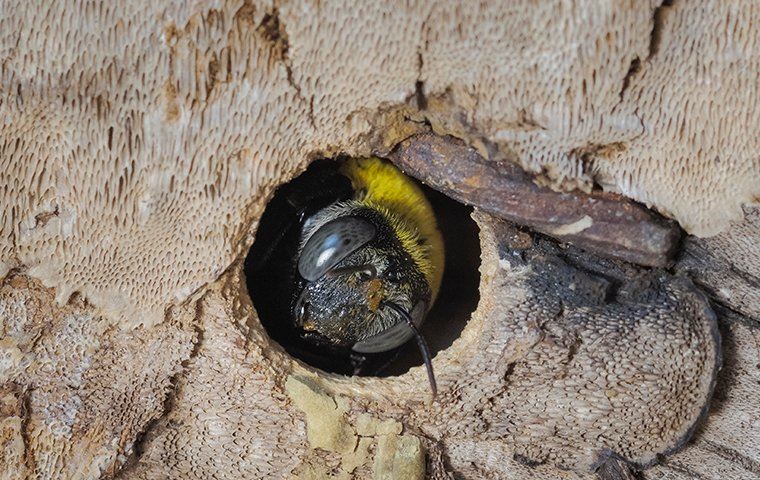
-
Where do carpenter bees build their nests?
Carpenter bees build their nests in softwood, earning them the nick-name Wood Bees or Wood Burrowing Bees. Old, untreated, and unpainted wood around your home makes perfect nests for carpenter bees. You’ll often find them burrowed in porches, old trees, sheds or any other structure with softwood. Coniferous trees are a favorite home for them. They’ll burrow round holes about ½ inch in diameter and can leave “frass” or sawdust outside the entrance.
Most carpenter bee nests will consist of a male and a female. The male bee stands guard, hovering around the nest to protect it from predators. Most often if you are attacked by a carpenter bee it will be the male. The female is the only bee that actually burrows in wood. She can burrow 2-4 feet through wood every season as she makes her nesting gallery for her carpenter bee larvae to grow.
-
How much damage can carpenter bees cause?
Like termites, Carpenter Bees are one of the primary wood-destroying insects in the United States. Unlike termites, Carpenter Bees don’t actually eat the wood. They prefer softwoods like conifers. Always the opportunist, carpenter bees are just as likely to find a home in your home or other outside structure. The female will burrow a hole a ½ inch wide about 4 – 6 inches deep. Once inside she will begin to branch off into multiple chambers perpendicular to the main tunnel. These tunnels are often inhabited by multiple generations and can grow up to 4 feet each season!
While rare, given enough time, carpenter bees can cause serious structural damage to any structure. They have also been known to kill trees if gone unchecked. And the bees themselves are not the only problem. Woodpeckers can wreak havoc on the structure while they peck at your structures or trees trying to get at the bees. In fact, a single woodpecker will cause significantly more damage than the bees ever could. By removing the bees you are also deterring woodpeckers from looking for food within your home or structure.
-
Can carpenter bees sting?
The male Carpenter Bee is EXTREMELY territorial. They spend their day hovering around the nest. They’ll dive-bomb any insect, animal or human that wanders too close. This can be very intimidating due to their large size. The male Carpenter Bee will make a very loud buzzing sound and bump into you with its large body. But this is all an empty threat. Male Carpenter Bees don’t actually have a stinger so they are unable to hurt you.
Only the female carpenter bee has a stinger. Fortunately, it’s very unlikely you’ll ever be accidentally stung by one. Female carpenter bees are generally docile but will defend herself if necessary. But she’s not easily threatened. If you’re waving your hands around trying to swat at her, or are digging into her nest, you’ll very likely get stung. If you stay calm and leave her alone, she’ll do the same.
-
Are carpenter bees dangerous?
Despite the aggressive nature of the male Carpenter Bee, he can’t hurt you in any way since he doesn’t have a stinger. The female, however, can and will attack if threatened. The carpenter bee sting is very similar to a bumblebee sting, but since they are solitary creatures, you’ll never be swarmed by a nest of carpenter bees. The female is capable of stinging multiple times. Each sting injects venom containing Melittin, a component that causes pain and the destruction of tissue.
A typical reaction to a Carpenter Bee sting is an immediate sharp pain for a few minutes, followed by dull aching. The bee sting often causes redness and swelling in the immediate area around the sting. The redness and swelling will reduce in time. The skin may continue to be sensitive and itch over the next few days.
Carpenter Bees are not usually dangerous to humans. However, people allergic to bee venom may experience a severe allergic reaction to the sting. If stung, they can experience any number of the following symptoms, and should seek immediate medical attention! Extreme allergic reactions can be fatal!
- Significant skin reactions like hives, itching, and flush or pale skin
- Difficulty breathing
- Swelling of the throat or tongue
- A weak, rapid pulse
- Nausea, vomiting or diarrhea
- Dizziness or fainting
- Loss of consciousness
-
How can I get rid of carpenter bees?
There are a number of ways you can get rid of nuisance Carpenter bees on your property. Due to the potentially dangerous nature of bee stings, we strongly recommend hiring a professional exterminator to inspect and remove any nests.
Safeguard Pest Solutions is your best choice for quality, local bee removal services. We specialize in beehive removal and will advise you on how to prevent future infestations. We offer quality home pest control and commercial pest control solutions and reasonable rates. Call or contact us today for a free consultation.
-
-
Bed Bug Pest FAQ
-
What do bed bugs look like?
Bed bugs are tiny insects capable of being seen with the naked human eye. Depending on where they are in their life cycle, and whether they just fed or not, will determine what you’re looking for. All bed bugs are flat and oval-shaped. They have 6 legs, two antennae, and no wings. They are great climbers capable of scaling vertical surfaces with relative ease.
Nymph bed bugs are translucent in color. If they just fed, the abdomen will appear a reddish color. That color will change to a rusty color all the way to black as it digests its meal. The newborn nymph bed bugs range in size from 2 – 5 millimeters in length.
As bed bugs grow into adults they molt their skin and turn a darker brown color. Adult bed bugs are rusty red / brown in color. A fully grown adult is a quarter of an inch long or larger! An adult bed bug is roughly the size of an apple seed.
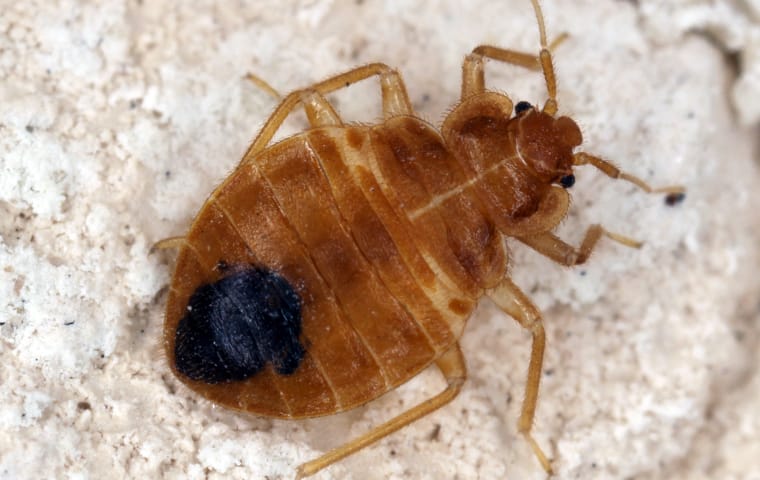
-
How can I tell if I have bed bugs?
You think you found a bed bug. There are signs of bed bugs on a mattress or in sheets that you can look for. If you wake up with itchy areas that weren’t there when you went to bed you may have bed bugs. Remove your bedding and do a thorough search of the mattress, sheets and surrounding area. Look for signs like:
Bloodstains on your sheets or mattress.
Dark or rusty spots on your bedding and nearby walls from bed bug excrement.
Bed bug fecal spots, eggshells, or shed skin in areas bed bugs may reside.
An offensive musty odor from the bed bug’s scent gland.
Be sure to also check the surrounding area around the bed. Bed bugs will hide in many places. Remove the dust cover of box springs and carefully examine the seams in the wood frame. Peel back the fabric where it’s stapled to get a closer look. Check anything on your nightstand including inside any books, telephones, and radios. Also, check the edge of carpets and even electrical outlets for signs of bed bug infestations.
-
How fast do bed bugs spread?
Under ideal conditions, you can have a bed bug infestation in as little as 3 – 4 weeks!
A female bed bug can lay 3 to 5 eggs a day, and up to 500 in the span of its lifetime. These eggs hatch in 6 to 10 days into baby bed bugs called nymphs. Nymphs will molt their skin five times before reaching adulthood. They require at least 1 feeding before they molt. An average lifespan of a bed bug is 2 – 4 months.
-
How did I get bed bugs?
Where do bed bugs come from? Bed bugs are found where a lot of people come and go. You’ll find them in hotels, hostels, shelters, and apartments. They like to hide in small nooks and crevices. Bed bugs can hitch a ride on luggage, pets, furniture, clothing, boxes and pretty much anything you bring into your home.
Bed bugs are found worldwide but are more common in developed countries. Bed bugs were once a rare thing in the United States, but has seen a rise in population due to more international travel and the government’s ban on a popular, but dangerous, insecticide DDT.
-
Can I get sick from bed bug bites?No, research shows that bed bugs do not directly make humans sick. In most cases where humans have become ill after bed bug bites, the underlying cause was due to allergies, blood loss, or infection. however, bed bugs can cause insomnia and anxiety, and it’s important to get these pests handled immediately!
-
Do bed bug bites hurt?
Most bite victims are unaware they were ever bitten until later. Bed bugs have a numbing agent in their saliva that prevents you from feeling the bite. In addition, bed bugs are nocturnal and tend to bite victims when they are in deep REM sleep.
Each person reacts differently to bed bug bites. Most bites are itchy at first and turn into tiny red welts. Many people mistake these for mosquito bites. Reactions range from nothing to mild red spots, or to severe rashes or hives. Bed bug bites tend to be in straight lines around your ankle, arms, or shoulders. In order to positively confirm your bite marks are from bed bugs, you must find and identify them.
-
Is it hard to get rid of bed bugs?Yes! It takes time and a lot of energy to remove bed bugs from your home. A pest control professional in Muskegon, MI should be involved right away. Not only will they help you locate all the possible spots they are hiding in, but they will also exterminate them, and give you instructions on how to keep them away. When bed bugs go dormant, they can live for up to 1 year without feeding, so you have to remain diligent if you want to keep them out of your home.
-
How can I get rid of bed bugs?
First, you should reach out to us for home pest control or commercial pest control services in Muskegon, MI. Next, be prepared to do a LOT of cleaning and laundry! Remove ALL affected areas including bed linens, sheets, clothing, pillowcases, etc., and wash them with hot water and heat. Use hot water and dry on the hottest setting. Get rid of all the clutter around your bed and vacuum the area thoroughly and purchase an enzyme cleaner to clean all surfaces. Seal up any areas where bed bugs may hide by gluing down loose wallpaper, caulking up walls, and sealing cracks. Repeat these steps frequently until the infestation is gone.
Purchase a well-made, tightly woven mattress and box spring zippered cover, which Safeguard Pest Solutions has available to purchase. This will seal any bugs inside and prevent more from getting in. Bed bugs can live for up to a year without feeding. So make sure to leave the cover on for at least 1 year. You may want to get rid of your mattress and buy a new one. If you do, be sure to take care of the rest of your home, or else bed bugs will infest your new mattress.
-
How can I prevent bed bugs?
If you are going out of town for a trip make sure to check your lodging immediately. Bed bugs can stow away in your luggage and clothes and enter your home when you return.
If you have purchased any furniture from a second-hand store or garage sale, be sure to check it thoroughly for signs of bed bug infestation before bringing it into your home.
Visitors entering your home may also bring in bed bugs. They don’t have to stay or sleep in your bed either. Be especially mindful of routine visitors like health aides, maids, and nurses who go in and out of many people’s homes as a part of their job.
When coming home from a trip, launder all your clothing before putting them back. Do not unpack your luggage on the carpet. Unload your bags on a hard light surface like cement or hardwood floors where any potential bugs or eggs can easily be seen. Clean your luggage out with a steam cleaner and/or hot water and heat.
-
-
Property Management
-
Eliminate Spiders
Hotel rooms, restaurants, apartment complexes, or other commercial property. Our pest control treatments to rid your home of spiders include natural solutions and baiting systems, as well as odorless sprays to get rid of them and prevent their return.
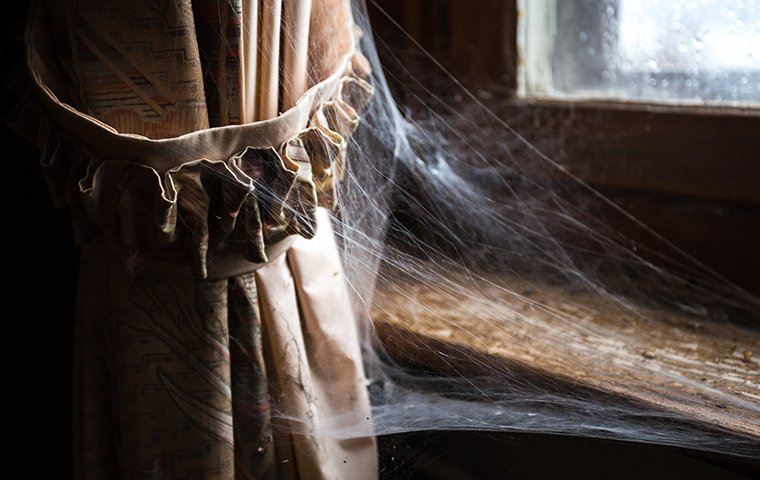
-
Get Rid of AntsWe offer professional pest control that will effectively rid your home of Common West Michigan ants, including carpenter ants, black ants, and yard ants. Carpenter ants nest in wood and are one of the largest and most common ants in Michigan. Black ants can devastate patches of your lawn, or burrow into your home looking for food or new locations to start colonies. Yard ants can suddenly appear on your lawn if you haven’t taken any preventative measures, and you have well-drained, dry, warm soil. An expertly trained exterminator will apply our ant control solutions to rid your property of ants fast!
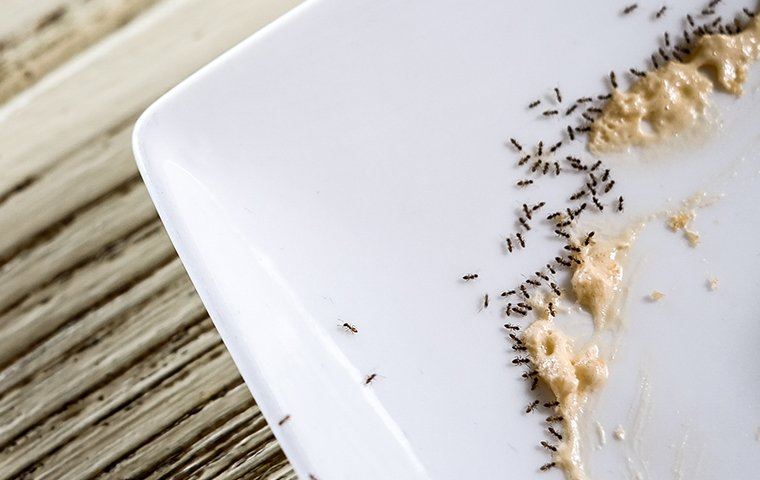
-
Stinging InsectsCall us for bee removal or wasp removal, as well as hornets, yellow jackets. These stinging insects can be aggressive and dangerous. Our exterminators locate and remove any and all wasps nests and beehives, and other nests in and around your property safely and quickly. This includes the removal of yellow jacket nests or ground bees to ensure the safety of our customers, especially those that may be allergic.
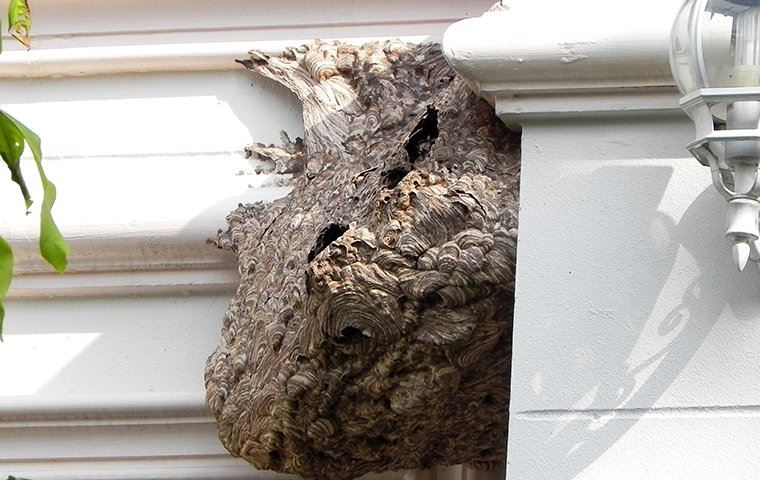
-
Get Rid of RoachesSafeguard Pest Solutions offers pest control services for all unwanted insects that may invade your home, including cockroaches. Keeping your home safe from cockroaches requires more than a one-time treatment; it’s an ongoing process. A professional exterminator will custom design a program for your situation and find the right answer for keeping cockroaches out of your home.
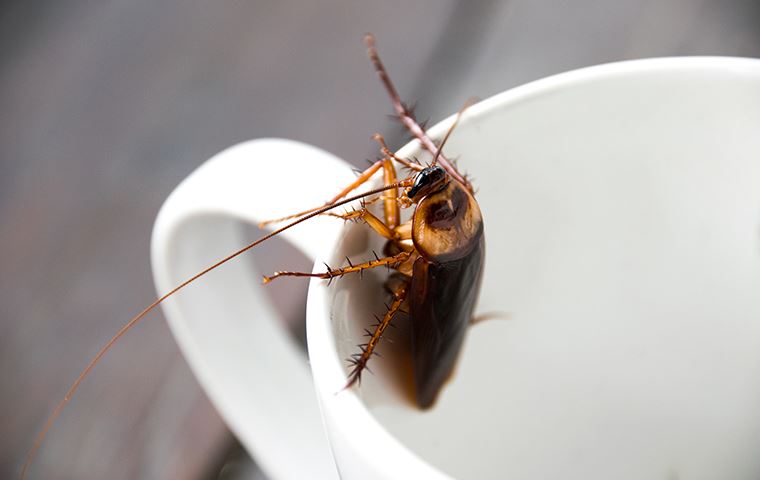
-
Identifying A Rodent ProblemMany West Michigan homes have a problem with rodent control. Droppings, gnaw marks, strange sounds, and urine odors are some of the tip-offs that you may have a rodent problem in your home. For pest control Grand Rapids, Muskegon, Holland, and the Lakeshore, Safeguard is your top choice.
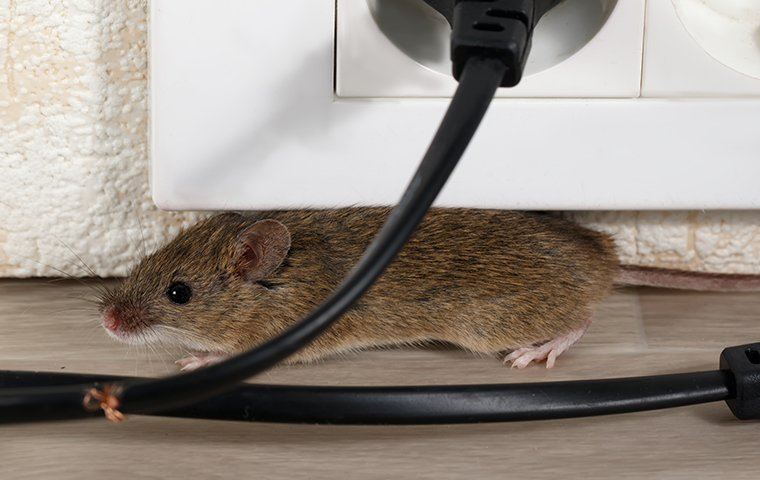
-
-
Bed Bugs
-
How many times will you treat my home for bed bugs?The team at Safeguard Pest Solutions relies on Aprehend, a unique mycoinsecticide, to remove bed bugs from your home. Aprehend has parasitical fungal spores that attach to bed bugs and slowly overwhelm them over time. For this treatment to reach maximal performance, we must visit your home a total of three times in the span of six weeks. We will schedule your first visit at a time convenient to you, apply the second set of treatments three weeks later, and finish with the third visit three weeks after that. If you have additional questions about our bed bug treatment schedule, don't hesitate to reach out for a free phone consultation.
-
Are your bed bug inspections free in Muskegon?Yes! Safeguard Pest Solutions offers free bed bug inspections to all home and business owners in Muskegon. We understand how stressful a bed bug infestation can be, and we go out of our way to make hunting them down as easy as possible. All you need to do is call our office and set up a time that works for you. Depending on the circumstances, we may even be able to provide same-day services!
-
Why should I choose Safeguard Pest Solutions for bed bug control in Muskegon?
Safeguard Pest Solutions is much more than your average pest control company. Boasting decades of combined experience in the residential and commercial pest control industries, we have the time, talent, and tools you need to remove pests without any abrasive ingredients. We pride ourselves on safe, odorless, and natural solutions for every infestation we find. Plus, our bed bug inspections are always free!
Ready to get started? You can get a complimentary phone consultation with Safeguard Pest Solutions today.
-